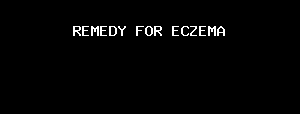profile/2681IMG_20200621_131300_882.jpg
Blessingstones

BENEFITS OF YOUGURT
~27.7 mins read
So, what’s for breakfast? Decisions. Decisions. Hmmm, oatmeal or yogurt? Both will give your body healthy nutritious goodness, but if you want some seriously sumptuous skin, I’d eat the oatmeal and save that creamy yogurt to add to your collection of homemade beauty products for a super moisturizing yogurt face mask (not that oatmeal doesn't have a place in skincare, too!).
Chock full of protein, calcium, vitamin D, and probiotics (the healthy bacteria that aid digestion), there’s no doubt yogurt provides delicious benefits for your insides. But it can also do beauty wonders for your outsides as well, namely for your skin.
Yogurt contains lactic acid, an alpha hydroxy acid, that dissolves dead skin cells. This gentle exfoliation not only helps to create a natural glow and prevent breakouts, but works to diminish the appearance of lines and wrinkles.
When topically applied to the skin, a velvety yogurt face mask will help moisturize, fight acne, prevent premature aging, relieve sunburn, and reduce discoloration. It’s an all-around beauty multi-tasker.
Experts agree. Dr. Judith Hellman, NYC Dermatologist and Associate Clinical Professor of Dermatology at Mt. Sinai Hospital, says yogurt helps to rejuvenate and soften the skin. Dr. Hellman recommends applying a yogurt face mask often and liberally after excessive sun exposure to calm skin. It is also an effective treatment for Keratosis pilaris, and may be mixed with honey for more intensive exfoliation.
Licensed Esthetician, Amanda Holdredge of Island Medical Spa SunGate Medical Group, suggests adding a few drops of melaleuca oil to a handful of yogurt to treat sunburn or acne. Take care to avoid eyes, mouth, and other sensitive skin areas when using essential oils. The dairy staple can also help to ward off skin discoloration and premature aging. Holdredge combines the juice of half a lemon with a couple tablespoons of yogurt for a lightening/brightening mask that may be used 2-3 times per week.
Skincando creator and eco-facialist, Sara Damelio, uses local yogurt in her facials for a mildly exfoliating, anti-bacterial, hydrating skin treatment. Sara has shared her fabulous recipe with us.
profile/2681IMG_20200621_131300_882.jpg
Blessingstones

REMEDY FOR ECZEMA
~13.6 mins read
Home remedies and natural treatments can soothe the dry, itching skin that comes with eczema.
People can use creams, natural products, and dietary and lifestyle changes to manage or prevent eczema flares, especially in the winter, when symptoms tend to be at their worst.
Natural substances, such as aloe vera gel and coconut oil, can moisturize dry, broken skin. They can also combat inflammationand harmful bacteria to reduce swelling and prevent infection.
Natural remedies cannot cure eczema, but they can help manage the symptoms and prevent flares. This article looks at the best natural remedies for eczema.
1. Aloe vera gel
A person can use aloe vera gel directly from the plant.
Aloe vera gel is derived from the leaves of the aloe plant. People have used aloe vera gel for centuries to treat a wide range of ailments. One common use is to soothe eczema.
A systematic review from 2015 looked at the effects of aloe vera on human health. The researchers reported that the gel has the following types of properties:
The antibacterial and antimicrobial effects can prevent skin infections, which are more likely to occur when a person has dry, cracked skin. Aloe’s wound-healing properties may soothe broken skin and promote healing.
How to use it
People can buy aloe vera gel in health stores or online, or they can purchase an aloe vera plant and use the gel directly from its leaves.
Choose aloe gel products with few ingredients — others can contain preservatives, alcohol, fragrances, and colors, all of which can irritate sensitive skin. Alcohol and other drying ingredients could make eczema worse.
Start with a small amount of gel to check for skin sensitivity. Sometimes aloe vera can cause burning or stinging. Generally, however, it is safe and effective for adults and children.
2. Apple cider vinegar
Apple cider vinegar is a popular home remedy for many conditions, including skin disorders.
The National Eczema Association (NEA) report that apple cider vinegar may help with the condition. However, they recommend using caution, as the vinegar’s acids can damage soft tissue.
No research has confirmed that apple cider vinegar reduces eczema symptoms, but there are several reasons why it could help:
Balancing the skin’s acidity levels
Vinegar is highly acidic. The skin is naturally acidic, but people with eczema may have less acidic skin than others. This can weaken the skin’s defenses.
Applying diluted apple cider vinegar could help balance the skin’s acidity levels, but vinegar can cause burns if it is not diluted.
In contrast, many soaps, detergents, and cleansers are alkaline. They can disrupt the acidity of the skin, which can leave the skin vulnerable to damage. This may explain why washing with certain soaps can cause eczema flares.
Fighting bacteria
Studies have found that apple cider vinegar may fight bacteria, including Escherichia coliand Staphylococcus aureus. Using apple cider vinegar on the skin could help keep broken skin from becoming infected.
How to use it
Always dilute apple cider vinegar before applying it to the skin. Undiluted vinegar can cause chemical burns or other injuries.
People can use the vinegar in wet wraps or baths, and it is available in most supermarkets and health stores.
To use apple cider vinegar in a wet wrap:
To try an apple cider vinegar bath soak:
3. Bleach in the bath
Although it may sound dangerous, research indicates that bleach in the bath can improve eczema symptoms due to its antibacterial and anti-inflammatory effects.
Bleach can kill the bacteria on the surface of the skin, including S. aureus, which causes staph infections. This may restore the microbiome of the skin’s surface.
Conclusions of a 2015 review indicate that bleach baths could reduce the need for topical corticosteroid or antibiotictreatments. However, other research found no benefits of bleach baths, compared to regular baths.
How to use it
To make a bleach bath for eczema, use regular-strength (6 percent) plain bleach and try the following:
Use lukewarm water to prevent the skin from drying out, and moisturize immediately after drying.
If a person experiences any discomfort, irritation, or redness, they should stop using bleach in the bath. People with asthma or breathing problems should refrain from taking bleach baths, due to the strong fumes.
4. Colloidal oatmeal
Colloidal oatmeal, also known as Avena sativa, is made from oats that have been ground and boiled to extract their skin-healing properties.
A 2015 study reports that colloidal oatmeal lotion had antioxidant and anti-inflammatory properties, resulting in improved:
According to the results of a randomized controlled trial, a colloidal oatmeal moisturizer worked better than a control.
How to use it
Add powdered colloidal oatmeal to a warm bath and soak.
Choose a colloidal oatmeal product that has oats as the only ingredient and avoid those with fragrances or additives. People can buy pure colloidal oatmeal from health stores or online.
Lotions and creams that contain colloidal oatmeal are also available for purchase online.
Colloidal oatmeal is generally safe for all ages, but people who are allergic to oats should avoid it. Individuals who are allergic to gluten should use caution, as oats are often processed with wheat.
Advertisement

Link socials
Matches
Loading...
